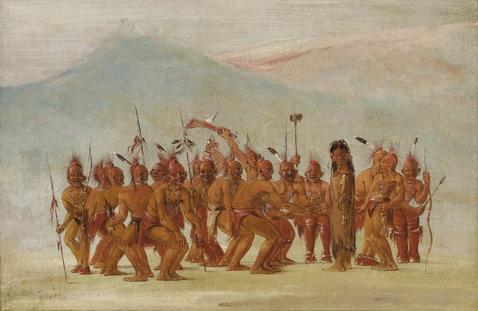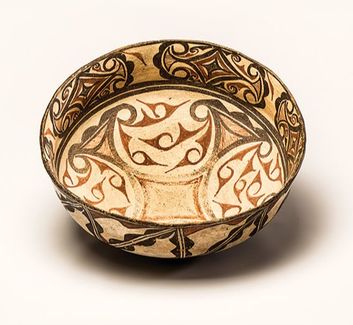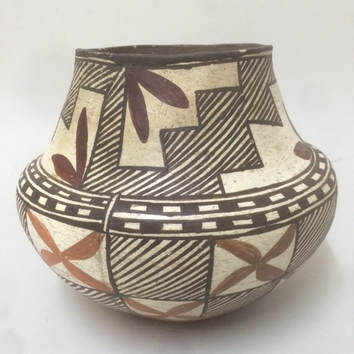Names and Roles of Two Spirit People: An Historical Perspective
By Cherie Randall
When George Catlin painted a scene from a Sac and Fox ceremony entitled “Dance to the Berdash,” the word berdache was used by whites to label Native people who did not conform to an expected gender identity. Taken from the French bardache, referring to a passive male homosexual, the expression ignored the significant and nuanced roles of these individuals within their tribes.
When George Catlin painted a scene from a Sac and Fox ceremony entitled “Dance to the Berdash,” the word berdache was used by whites to label Native people who did not conform to an expected gender identity. Taken from the French bardache, referring to a passive male homosexual, the expression ignored the significant and nuanced roles of these individuals within their tribes.
|
George Catlin, Dance to the Berdash, 1835-1837, oil on canvas, Smithsonian American Art Museum
|
Before European contact, Native American tribes already had their own terms for people who are now widely recognized as Two Spirit. These individuals were considered a third (in some cases, fourth or fifth) gender, and were not only accepted, but revered for their unique abilities and contributions. The Zuni lhamana were born biologically male, but dressed in women’s clothing, and performed typically female roles, such as cooking, weaving and pottery making. They were admired for their skills as artisans, and often served as mediators and teachers. None of this excluded them from traditionally male pursuits like hunting or warfare however, if they chose to participate. The most well-known lhamana, We’wha, was a talented potter and weaver, and is the subject of Will Roscoe’s book, The Zuni Man-Woman. |
|
Like the lhamana, the male-bodied winkte was a valued member of Lakota society, believed to have the gift of prophecy. They were sought after as assignors of secret, spiritual names imbued with power for children. There are myriad terms and definitions for Two Spirit people across Native American and First Nations tribes, the above being only two examples. A more important exercise is to understand the esteem with which Two Spirits were held, and the functions they performed within their societies. As mentioned earlier, Two Spirits were considered a distinct and separate gender - one that combined and balanced both male and female essences. As such, their worldview and experiences were unlike those of the binary genders. They were therefore seen as extraordinary, possessing a sacred quality. Two Spirits people fulfilled a diverse number of roles that included matchmaking, prophesying, name conferring, and mediating. They also served as medicine men/women, hunters, warriors, shamans, chiefs, and officiants for ceremonies like the Sun Dance of the Plains tribes. Male-bodied Two Spirit people kept house, wove textiles and baskets, created ceramics and leather goods, and wore female clothing. They often married other non-Two Spirit people who were also male. Female-bodied Two Spirit people were horseback riders, warriors, healers, and hunters, and they wore male clothing. They often married other non-Two Spirit people who were also female. What Catlin failed to understand is that Native people believed a person could be born with both male and female spirits, and that this was a manifestation of the sacred. There was no judgement based on gender or sexuality. A person was valued based upon their contributions to the tribe, and by their character. Two Spirits people and their accomplishments were, and still are, worthy of celebration. |
Sources:
Brayboy, Duane. Two Spirits, One Heart, Five Genders, in Indian Country Today, September 7, 2017
Jacobs, Sued-Ellen, Wesley Thomas, and Sabine Lang. Two-Spirit People, (University of Illinois Press, 1997)
Roscoe, Will. Changing Ones: Third and Fourth Genders in Native North America, (Palgrave/St. Martin’s Press, 1998)
__________. The Zuni Man-Woman (Albuquerque: University of New Mexico Press, 1991)
Brayboy, Duane. Two Spirits, One Heart, Five Genders, in Indian Country Today, September 7, 2017
Jacobs, Sued-Ellen, Wesley Thomas, and Sabine Lang. Two-Spirit People, (University of Illinois Press, 1997)
Roscoe, Will. Changing Ones: Third and Fourth Genders in Native North America, (Palgrave/St. Martin’s Press, 1998)
__________. The Zuni Man-Woman (Albuquerque: University of New Mexico Press, 1991)



